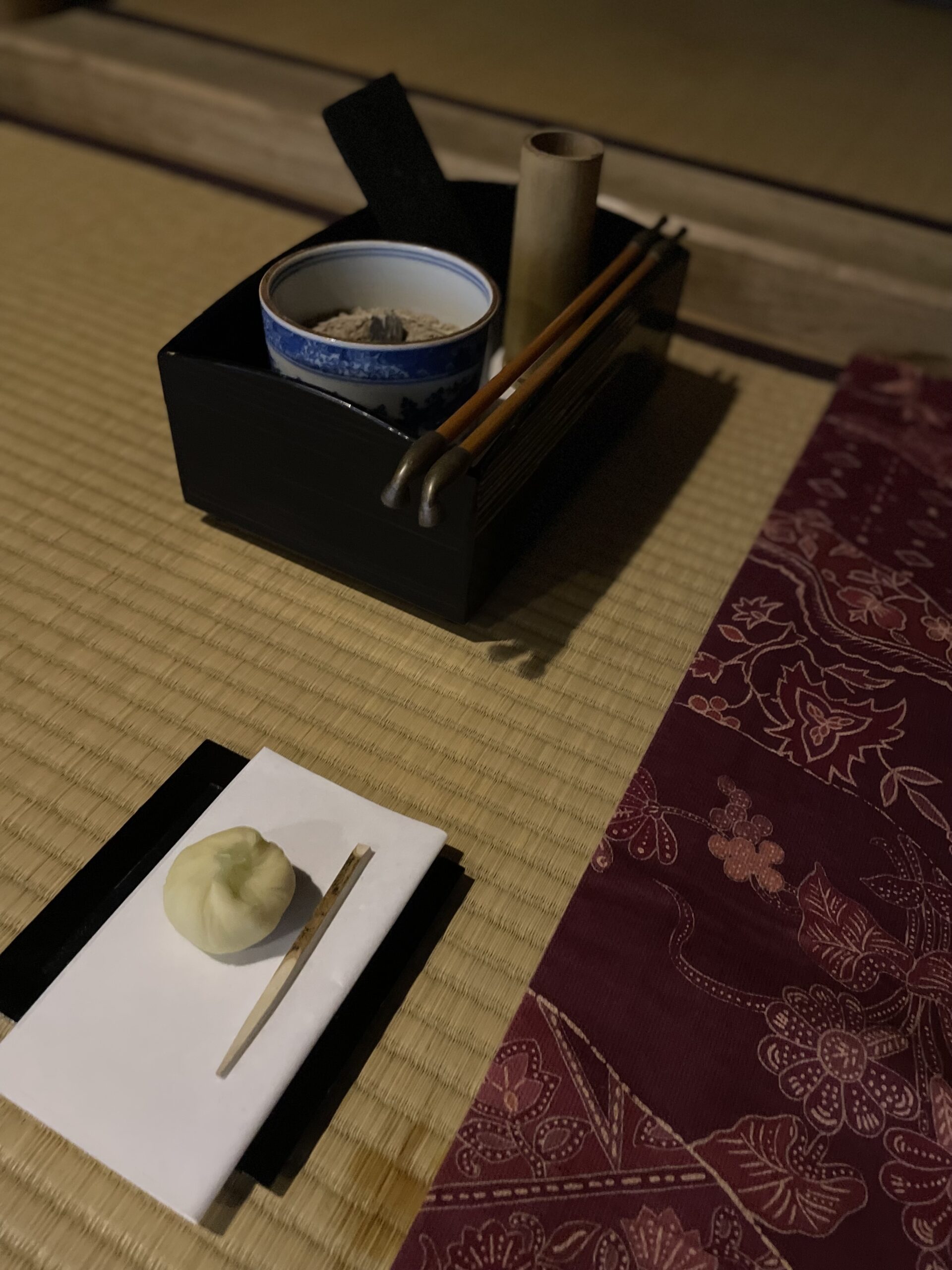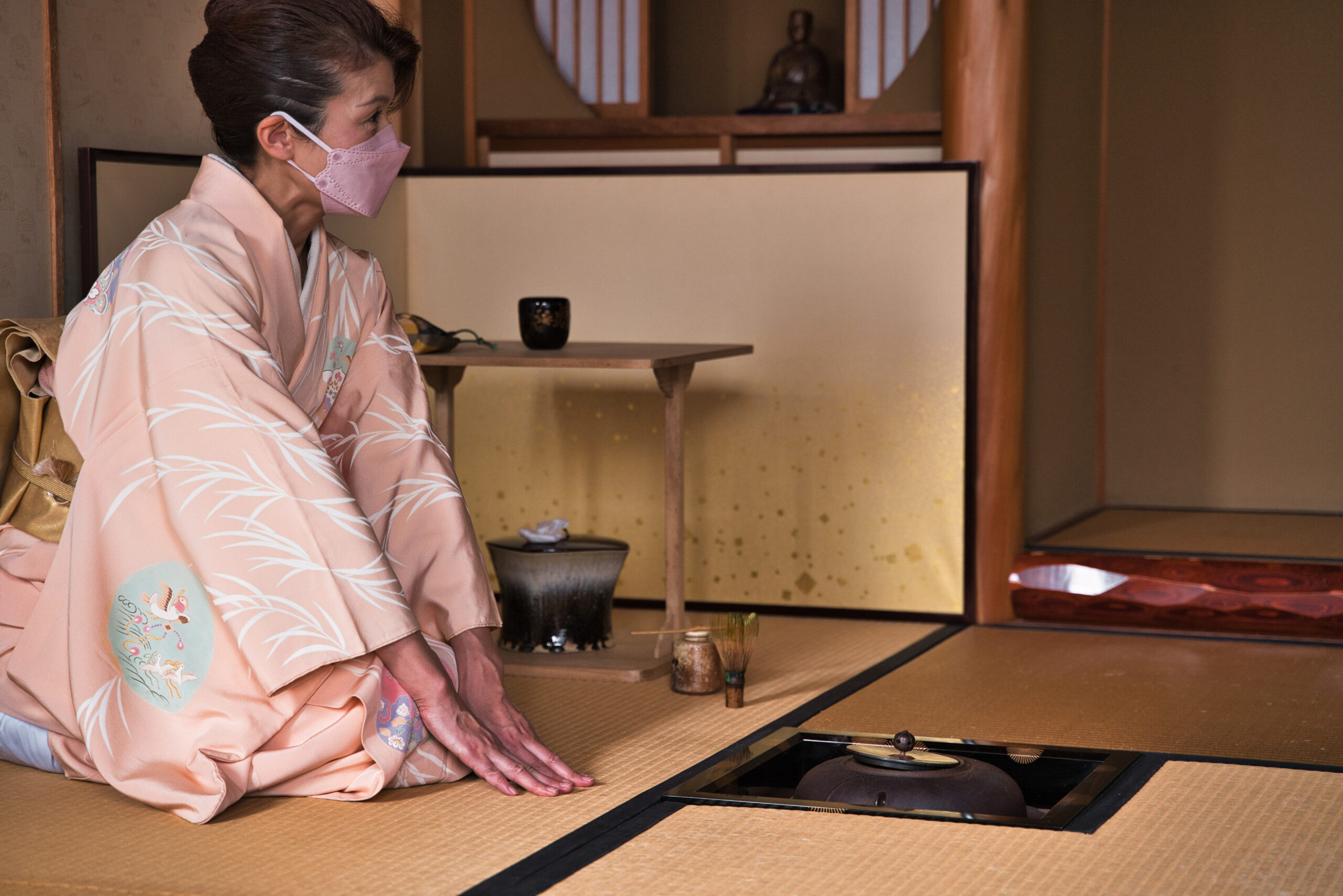Tea Ceremony

The World of Tea Ceremony
The tea ceremony is often perceived as difficult due to its many rules and etiquette, but it is not necessarily so, and each aspect has its own meaning. It is a beautiful Japanese tradition that embodies the spirit of hospitality and the concept of wabi-sabi. By learning about and understand all the reasons behind the rules and etiquette, one’s appreciation of tea ceremony will deepen. We hope that this experience will allow you to connect with and appreciate this part of Japan’s rich cultural heritage.
It is said that the tea-drinking culture in Japan began during the Nara period (710-794), when monks brought tea from China. At that time, tea was used as a form of herbal medicine, reserved only for the upper class due to its rarity.
Later, the famous tea master Sen no Rikyu revolutionized the tea ceremony by simplifying the complicated aspects and etiquette, instead focusing on bringing out the natural, unpretentious beauty of it. This made the ceremony more accessible to the general public and deeply ingrained it in Japanese culture, a tradition that continues to this day.
While there are several schools within the long history of tea ceremony, each with its own styles. The three most famous are those of Rikyu’s descendants, Urasenke, Omotesenke, and Mushakojisenke. These three are often referred to as the head houses of the Japanese Way of Tea. While the styles and details vary between schools, they all share the common goal of enjoying tea.
In this experience, we offer a tea ceremony in the style of Omotesenke, a school renowed for its emphasis on traditional methods, placing great importance on preserving old customs.
Through the sharing of one cup of tea, both the host and the guest enjoy a pleasant time together and deepen their connection. This experience offers a space where you can engage all five of your senses, connect with the people present, and, most importantly, reflect upon yourself. We would be honored if you could experience this moment.
